The Ford Escape has always been a bit of an outcast in the crossover world. When everyone was trying to create a more car-like look and experience, the old Escape soldiered on with its tall, square profile and truck like ride. Today however, there is a very new and very different Escape on sale. Gone are the huge panel gaps, and square styling. They have been replaced with a sleek machine that looks more like a tall Focus than a crushed Explorer. Does this new Escape have what it takes to compete in the small CUV market, or did Ford wait too long to revamp this machine? We spent a week putting a 2013 Ford Escape EcoBoost Titanium through the wringer to check.
Lets just be clear from the start, this is not a cheap crossover. Our tester carried a final sticker price just shy of $35,000, but Ford says the price is justified. Lets us find out.
The most obvious change for this new 2013 Escape is the exterior design. The old and unattractive square shape of the old crossover has been replaced with a sleek design that fits in with the rest of the Ford family tree. We are not sure we would call it pretty, especially at the rear, but we feel it is a huge improvement overall. The sleek LED headlamps and Deep Impact Blue Metallic paint go a long way to sprucing up the visuals.
The interior of out Titanium level tester came with seats that shared equal parts leather and cloth, and featured wonderful bolstering. It may seem pointless to many that Ford included sports seats in a crossover, but we appreciate the comfort that only comes from a chair that hugs you. The mix of leather and cloth also gets high marks in our books. We prefer the grippy nature and temperature friendly properties of cloth, but by including leather on the high wear areas of the seats Ford has given us the best of both worlds. We want these on everything. The rest of the interior is more hit and miss. The futuristic style adds tons of visual flair, but we question its ergonomic qualities. The HVAC system is a great example. The gear shift is placed directly in front of these controls making them extremely difficulty to operate. We understand that the voice control system of SYNC is supposed to make these controls redundant, but that does not work as well in life as it does in theory.
The MyFord Touch and accompanying SYNC system are easily the most polarizing additions to the car. For reasons that are beyond fathomable, half of the system works perfectly, the other half fails on nearly every command. A great example is the radio; the system will understand the command “tune Sirius Radio channel 70” perfectly. No breaks, pauses or confirmation commands, it just works. You can even state station names like Octane. However, if you enjoy the musical channel of Alt Nation you are out of luck. I can get the radio to accept the commands of “Octane” “Bluesville” and “The Loft”, but saying “Alt Nation” results in nothing more than a very annoying (and far too common) beep acknowledging failure to understand. It is this lack of consistent acceptance of commands that makes the system basically useless. If the system will not operate every time, we would just as soon avoid using it. This system has potential beyond any in-car technology we have yet to encounter, but it needs a few more kinks ironed before we will call it useful.
Let’s not write the Escape off just yet, as it has one supremely redeeming feature. It is utterly great to drive. Our tester came paired with the EcoBoost 2.0-liter engine and AWD, but that was not the best part. Despite its high riding nature and suburban nature, the Escape demonstrates an incredible well balanced chassis with great steering. When sawing at the wheel you are met with positive feedback, near perfect weighting and even some slight rear end slippage when pressing through long sweeping corners. It was very unexpected, and greatly appreciated. Ford has a long history of nailing the driving experience in many of its cars, the Focus springs to mind, and the Escape fits that mold. The surge of the EcoBoost engine only serves to enhance the experience. The engines 240 horsepower pulls the Escape with sureness rather than urgency and could provide spirited propulsion without the snappy feel of competitors like the Hyundai Santa Fe turbo. Even fuel economy was better than expected, with an observed 26.5 mpg – until some vigorous holiday shopping dropped us to 23. That compares favorably to the 22/30 that appears on the sticker.
The practical side of the Escape is just as impressive as its driving characteristics. The rear seats slide and recline to make more room for cargo or provide more comfort for rear seat passengers. When you need maximum hauling ability the seats fold down with the pull of one large lever and the cavernous Escape is yours to fill. Of course the Escape does feature the trick rear hatch access that can be operated with your foot. This seems like a useless feature, but it works surprising well and was very helpful when we were carrying multiple large bags of horse feed. Just like the split leather/cloth interior, we want this on everything made from here forward.
Despite its questionable ergonomic choices and frustrating voice control system, the new 2013 Ford Escape trumps its rivals in comfort and driving dynamics. We know that many consumers place very little stock in how a car drives, but we are firm believers that more communicative car is easier to drive especially in any type of emergency situation. When you add the impressive ability and neat features like the rear hatch access, Ford has created a winner. If you are in the market for a new small crossover, you need to spend some time behind the wheel of the 2013 Ford Escape. It is leagues ahead of any of the competition we have driven.

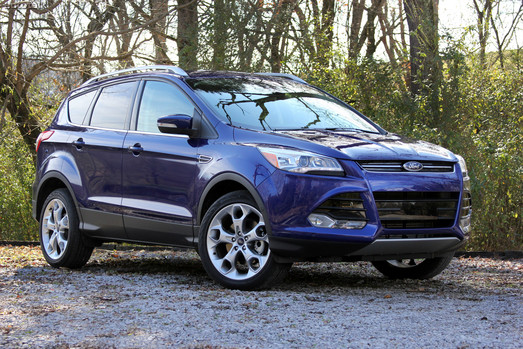







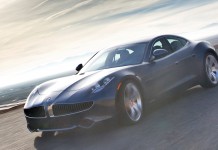
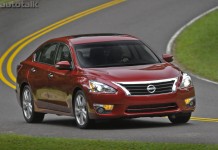
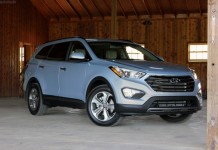
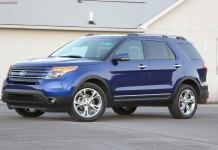
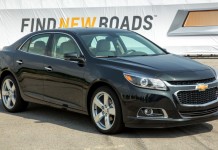
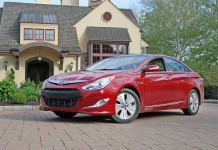


[…] […]